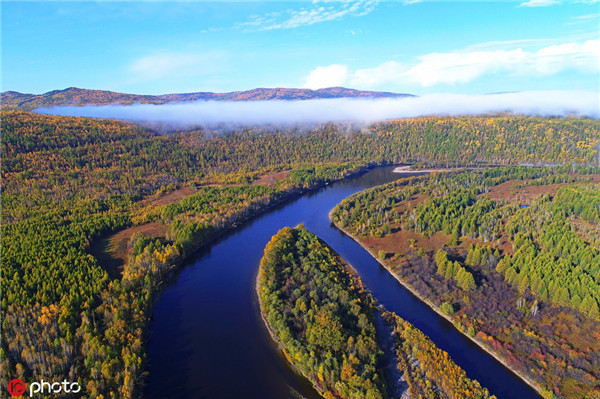Inner Mongolia expands forest coverage


An aerial view of a forest in the Greater Hinggan Mountains in North China's Inner Mongolia autonomous region. [Photo/IC]
According to local authorities, the forested area in North China's Inner Mongolia autonomous region has increased from 373 million mu (24.87 million hectares) in 2013 to 392 million mu today. The percentage of land covered by forest has increased from 21.03 percent to 22.10 percent.
Protecting the environment in Inner Mongolia is a priority of the government. Key national projects such as the "Three-North Shelterbelt Program" (TNSP), preventing dust storms that affect the Beijing-Tianjin area, turning reclaimed farmland into forests, and protecting natural forests have been pursued in the region.
In recent years, Inner Mongolia has been engaging in large-scale afforestation, completing more than 10 million mu each year and accounting for about one-ninth of all environmental development goals.
The region is also working to reign in desertification by carrying out special treatments in key areas of Hunshandake and Ujimchin. In 2018, 12.7 million mu of land in the region was treated to prevent desertification.
On April 1, 2015, the region completely stopped commercial forest harvesting, reducing the annual timber harvest by 1,512,000 cubic meters. Full protection for natural forest resources has been achieved.
After years of strict environmental management, Inner Mongolia has been able to increase forest and grassland coverage and slow down desertification.
MOST POPULAR
- 1 China to give visa-free treatment to another 9 countries
- 2 China fully opens manufacturing sector to foreign investors in landmark opening up move
- 3 China's import expo attracts record-breaking participating countries, exhibitors
- 4 China's door opening even wider to foreign visitors, businesses
- 5 China revises rules to ease foreign strategic investment in listed firms
Editors' Picks
 Video:
Peru sees new port open
Video:
Peru sees new port open
 Infographic:
China's public holidays for 2025
Infographic:
China's public holidays for 2025
 Infographic:
Basic facts of APEC
Infographic:
Basic facts of APEC
 Infographic:
Wrapping up the 7th CIIE: Data recap
Infographic:
Wrapping up the 7th CIIE: Data recap



